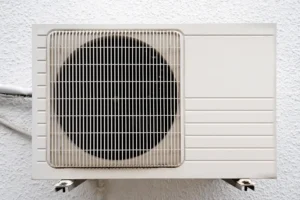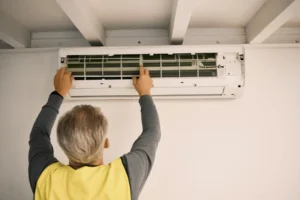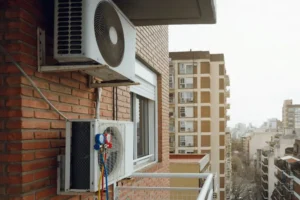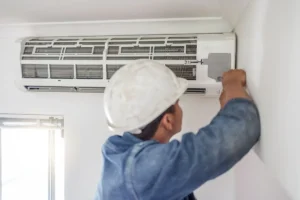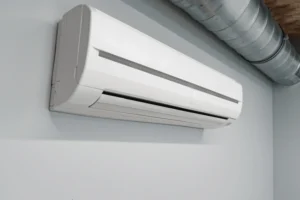Ottawa is one of the coldest capital cities in the world, with winter temperatures regularly dipping to –20 °C or colder. For homeowners here, heating isn’t optional, it’s a matter of comfort and survival. A ductless heat pump is an appealing solution because it provides both heating and cooling in one efficient system, but the harsh climate significantly impacts cost.
Cold-climate performance, insulation levels, and local installer expertise all determine how much you’ll pay for installation. In 2025, homeowners in Ottawa report paying anywhere from CA$2,000 to more than CA$15,000, depending on system size, configuration, and efficiency. The broad range exists because so many variables go into each project.
This guide breaks down every major factor that influences the cost of ductless heat pump installation in Ottawa, helping you make an informed decision.
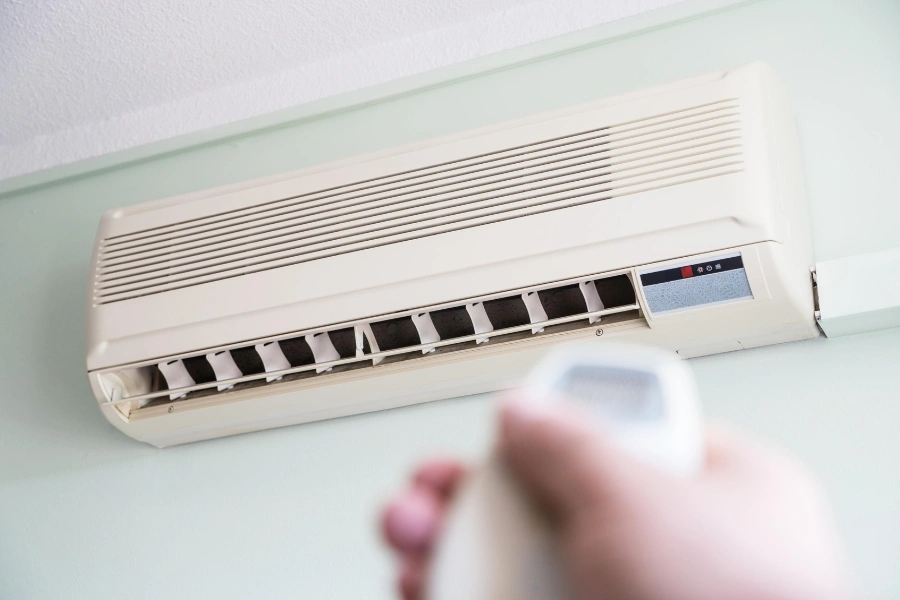
2. System Type and Capacity
Single-Zone vs. Multi-Zone
- Single-Zone Ductless Systems
- Ideal for condos, apartments, or one primary living area.
- Costs in Ottawa typically range CA$2,000–CA$6,000.
- More affordable upfront but limited in reach.
- Multi-Zone Ductless Systems
- Designed for larger homes or multiple rooms.
- Costs usually range CA$6,000–CA$10,000+, depending on zones.
- Requires additional indoor units and refrigerant lines, adding to labor and materials.
Cold-Climate Capacity
Ottawa homeowners rarely choose “standard” mini-splits, since these often lose efficiency below –10 °C. Cold-climate certified units can operate efficiently down to –25 °C or –30 °C. These systems cost more, often CA$1,500–CA$3,500 extra, but without them, homeowners risk needing costly backup heating.
3. Efficiency Ratings (SEER / HSPF)
Efficiency ratings directly influence both price and long-term savings:
- SEER (Seasonal Energy Efficiency Ratio): Measures cooling efficiency.
- HSPF (Heating Seasonal Performance Factor): Measures heating efficiency.
Higher ratings equal lower energy bills, but systems with SEER above 20 or HSPF above 10 generally cost more upfront. For Ottawa homes, a system rated at HSPF 10+ can save 20–30% annually on heating costs, potentially offsetting higher purchase costs within 5–7 years.
4. Installation Complexity
No two Ottawa homes are identical, and installation costs can rise quickly based on complexity:
- Number of Zones: Each indoor head requires extra refrigerant piping and labor.
- Home Layout: Multi-story homes with thick walls or limited access points require more drilling and routing.
- Mounting Type: Wall-mounted units are cheaper; floor or ceiling cassettes add cost.
- Outdoor Placement: If the outdoor condenser must be elevated (common in snowy Ottawa winters), extra framing or brackets may add hundreds of dollars.
- Permits and Inspections: Ottawa requires compliance with local building codes, which can add CA$50–CA$300.
5. Electrical and Structural Upgrades
Electrical Work
Many older Ottawa homes (especially pre-1980 builds) lack adequate electrical capacity. A ductless system may require:
- Dedicated circuits (CA$250–CA$400).
- Panel upgrades if your home doesn’t have spare breaker space (up to CA$1,500+).
Structural Considerations
If the outdoor unit is placed in a snow-prone area, contractors may install a raised stand or canopy. Homes without clear wall access may also require longer refrigerant lines, which increases cost.
6. Labor, Brand & Permits
Installer Expertise
A certified Ottawa HVAC contractor typically charges CA$75–CA$125/hour. Experienced installers may cost more, but they ensure proper refrigerant charging, airflow design, and warranty compliance. Improper installation can reduce efficiency by up to 30%, costing you more long-term.
Brand Choice
- Premium brands (Mitsubishi, Daikin, Fujitsu): Higher initial investment but proven cold-climate reliability.
- Mid-range brands (Carrier, Trane, Lennox): Balanced pricing with good efficiency.
- Budget brands: Lower upfront cost but may require earlier replacement.
Permits
Ottawa building and electrical permits add modest but necessary expenses, usually CA$50–CA$300.
7. Rebates, Financing & Incentives
Ottawa homeowners can significantly reduce costs by leveraging government programs:
- Canada Greener Homes Grant: Up to CA$5,000 rebate for energy-efficient retrofits, including heat pumps.
- Oil-to-Heat Pump Affordability Program: For households transitioning from oil heating, rebates can cover several thousand dollars.
- Low-interest financing: Hydro Ottawa and federal programs offer repayment options spread across monthly bills.
Example: A homeowner installing a CA$9,000 ductless system reported their final cost dropped to about CA$4,000 after rebates, with repayments spread at ~CA$21/month through loan programs.
8. Home Efficiency and Insulation
A home’s insulation directly impacts ductless system size, and therefore cost:
- Well-insulated homes may require smaller systems, saving thousands on equipment and installation.
- Poorly insulated homes need oversized units, inflating cost and energy use.
Adding insulation or sealing air leaks before installation can sometimes reduce required capacity enough to save more than the insulation project itself cost.
9. Market Conditions & Supply
The HVAC market fluctuates with supply chain conditions, especially post-pandemic. During peak rebate rollouts or extreme weather, demand spikes, leading to:
- Higher equipment costs.
- Installation delays.
- Occasional labour surcharges.
Homeowners who book installations in spring or fall often secure better pricing and faster service compared to winter emergencies.
10. Cost Breakdown Table
| Cost Factor | Typical Range (CAD) | Notes |
| Single-Zone System | $2,000 – $6,000 | Best for condos or small spaces |
| Multi-Zone System | $6,000 – $10,000+ | Adds heads and refrigerant lines |
| Cold-Climate Model | + $1,500 – $3,500 | Needed for Ottawa winters |
| High Efficiency (SEER/HSPF) | + $1,000 – $2,500 | Lower bills over 5–7 years |
| Electrical Upgrades | $250 – $1,500+ | Panels, circuits, breakers |
| Labor Costs | $75 – $125 per hour | Licensed HVAC professionals |
| Permits & Inspections | $50 – $300 | Ottawa building/electrical codes |
| Structural Adjustments | $300 – $1,000 | Stands, brackets, longer lines |
| Rebates & Incentives | – $2,000 to – $5,000 | Canada Greener Homes, provincial |
11. Tips to Control Costs
- Request multiple quotes from at least 2–3 Ottawa-based HVAC contractors.
- Insist on a Manual J load calculation to size your system correctly. Oversized units cost more and waste energy.
- Bundle improvements (insulation + heat pump) to maximize rebates.
- Schedule installations off-season (spring/fall) for better rates.
- Ask about extended warranties, sometimes worth the upfront investment.
- Verify rebate eligibility before finalizing purchase to avoid missed savings.
12. Summary
The cost of ductless heat pump installation in Ottawa depends on a complex mix of factors:
- System type and size (single-zone vs multi-zone)
- Cold-climate performance and efficiency ratings
- Installation complexity and electrical upgrades
- Labour, brand choice, and permit costs
- Rebates, financing, and home efficiency improvements
While the upfront investment can be significant, homeowners can control expenses with smart planning and rebate use. Ultimately, a well-installed cold-climate ductless system offers year-round comfort, substantial energy savings, and a long-term hedge against rising energy prices.
FAQ
How much does a single-zone ductless heat pump installation cost in Ottawa?
Typically between CA$2,000 and CA$6,000, depending on brand, capacity, and installation specifics.
What drives the cost of multi-zone ductless heat pump systems?
Key factors include number of zones, installation complexity, high-efficiency or cold-climate models, and electrical upgrades.
Can rebates or grants significantly lower installation costs?
Yes, programs like the Canada Greener Homes Grant and regional loans can offset several thousand dollars of costs.
Why might cold-climate models cost more?
Cold-climate units include advanced compressors, low-ambient operation, and enhanced warranties, raising unit price and installation complexity.
How does installation complexity affect total cost?
Difficult access, additional electrical work, zoning, and permits can add hundreds to thousands of extra dollars.
Final Thoughts
In 2025, the cost of ductless heat pump installation in Ottawa is shaped by a variety of interconnected factors. On average, homeowners can expect to invest anywhere from CA$3,500 to CA$15,000, with most projects landing in the CA$6,000–CA$10,000 range. The wide range reflects the unique combination of considerations that come into play for every home, system type, number of zones, efficiency ratings, installation complexity, and brand selection all directly influence the final price.
Ottawa’s cold climate is one of the most important drivers of cost. To maintain efficiency in sub-zero conditions, most homeowners opt for cold-climate certified heat pumps, which are more expensive but essential for reliable performance. Similarly, efficiency ratings (SEER and HSPF) can raise upfront costs but lead to significant savings on heating and cooling bills over time. Additional expenses, such as electrical panel upgrades, structural adjustments, or extended refrigerant line runs, can also add hundreds or even thousands of dollars.
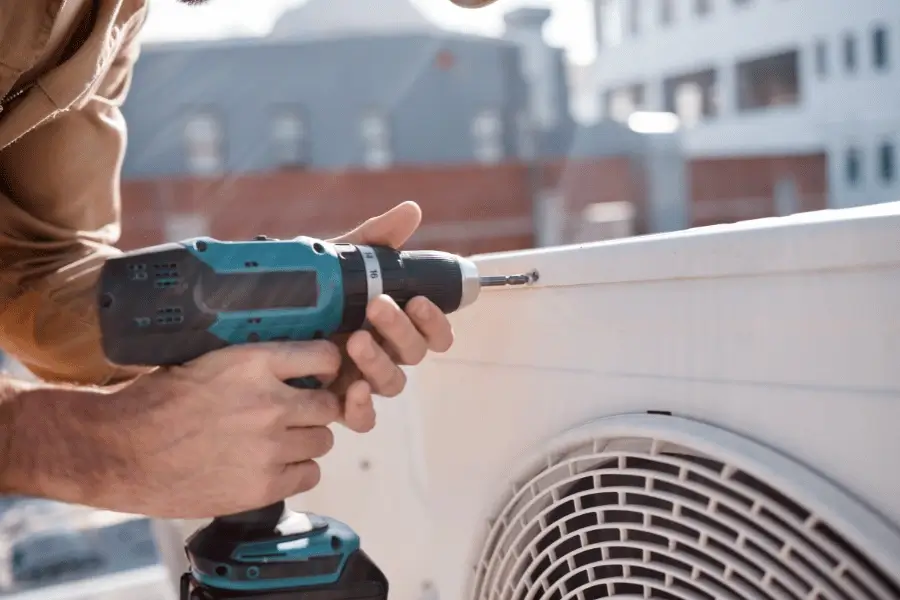
On the other hand, government rebates, grants, and financing programs help offset costs. The Canada Greener Homes Grant and provincial incentives can reduce expenses by several thousand dollars, making higher-end, energy-efficient systems more affordable. Homeowners who plan strategically, by scheduling installations during off-peak seasons, bundling upgrades like insulation, and securing multiple quotes, can further manage costs.
Ultimately, understanding the factors affecting ductless heat pump installation costs in Ottawa empowers homeowners to make smarter decisions. By prioritizing efficiency, leveraging rebates, and choosing a qualified HVAC contractor, you can ensure not only the right price but also long-term comfort and energy savings. A well-planned installation is more than a purchase; it’s an investment in your home’s efficiency, resilience, and future value.

